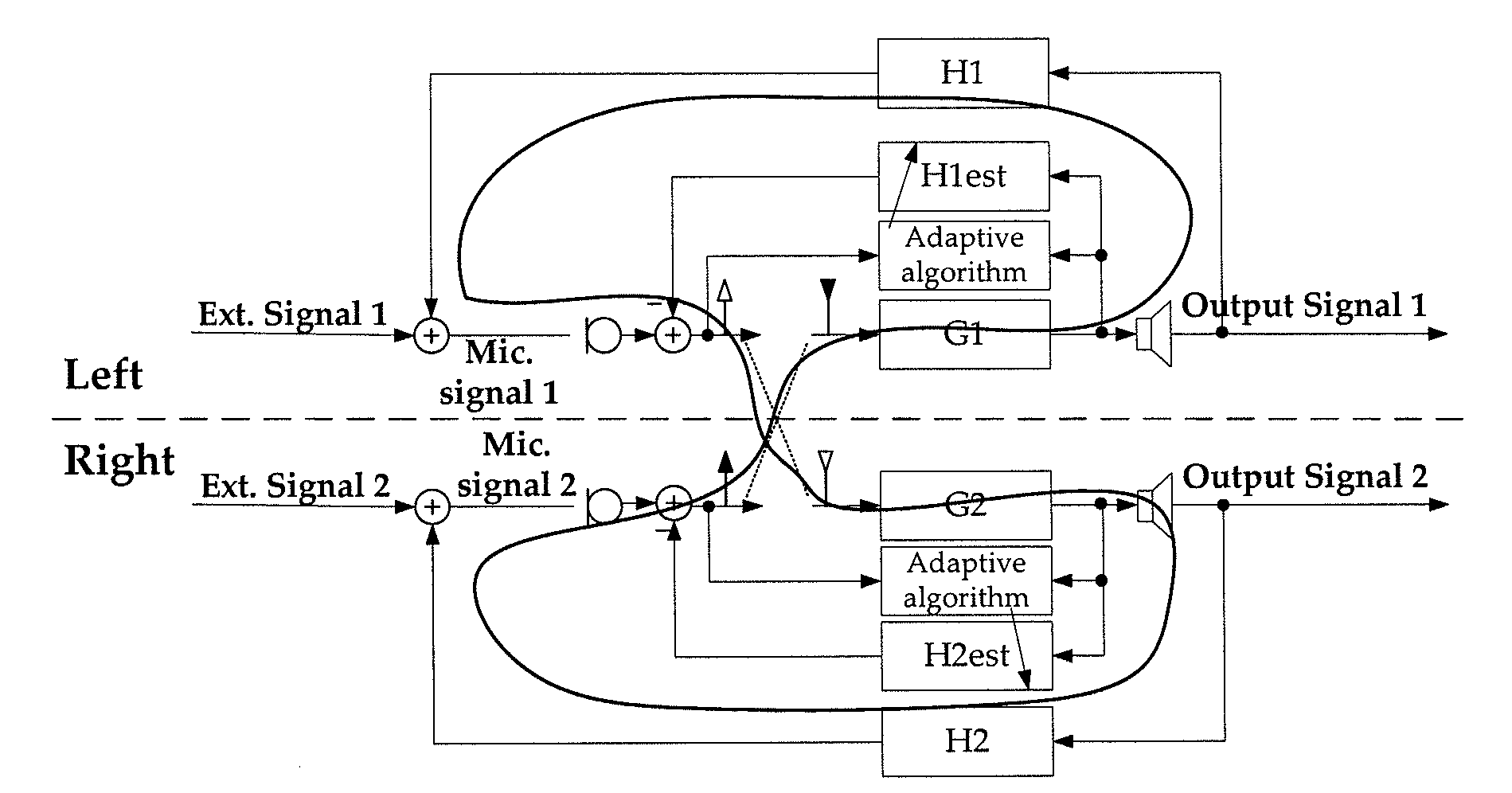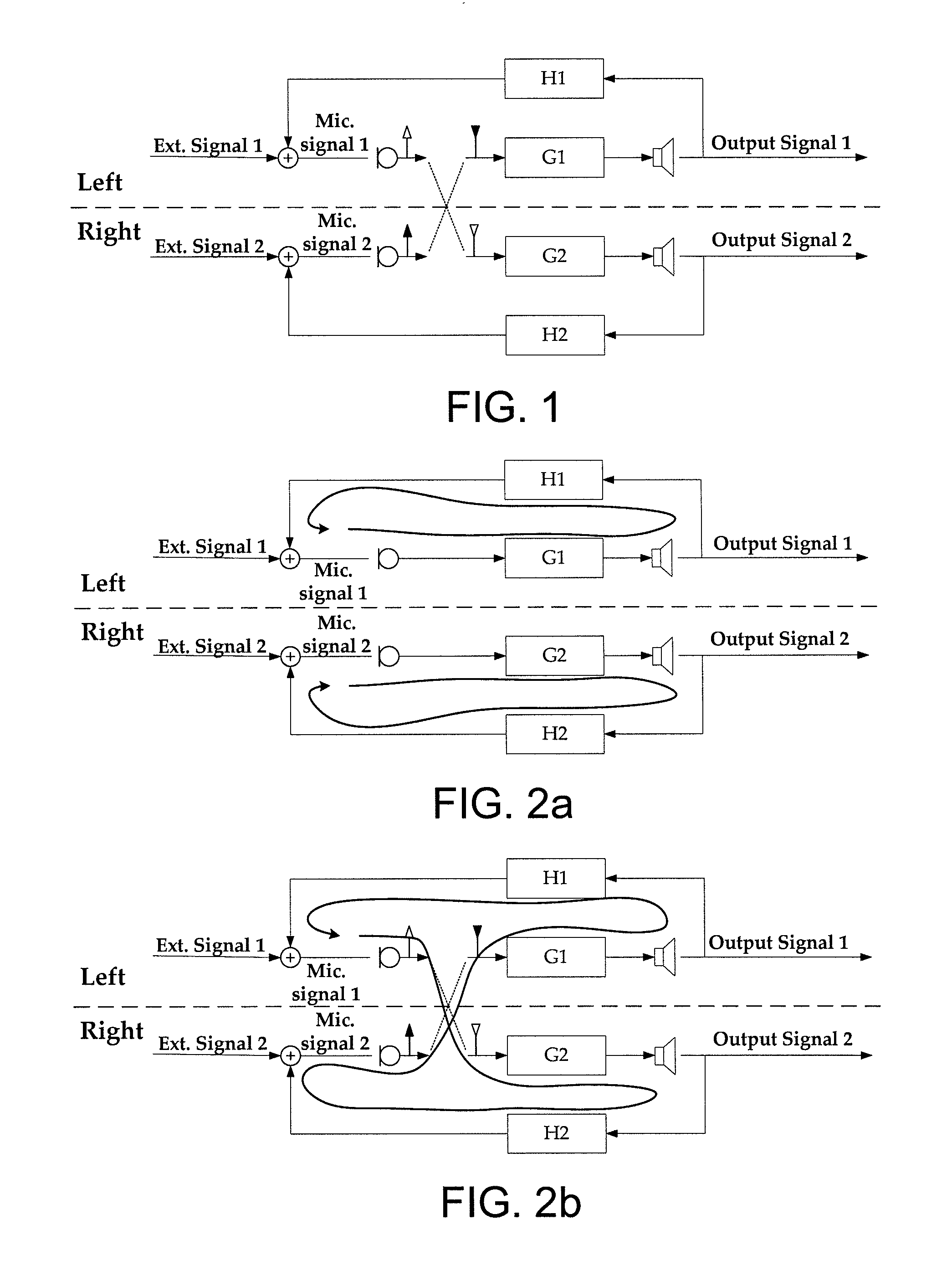System for reducing acoustic feedback in hearing aids using inter-aural signal transmission, method and use
a technology of inter-aural signal transmission and hearing aid, applied in the field of hearing aid, can solve the problems of signal distortion, autocorrelation of input signal to correlation between, and inability to accurately eliminate and achieve the effect of reducing or eliminating acoustic feedback in a pair
- Summary
- Abstract
- Description
- Claims
- Application Information
AI Technical Summary
Benefits of technology
Problems solved by technology
Method used
Image
Examples
Embodiment Construction
[0075]FIG. 4 shows a simplified block diagram of a hearing aid comprising a conventional feedback cancellation system for reducing or cancelling acoustic feedback from an ‘external’ feedback path (termed ‘Acoustic Feedback’ in FIG. 4) from an output to an input transducer of the hearing aid. The feedback cancellation system comprises an adaptive filter, which is controlled by a prediction error algorithm, e.g. an LMS (Least Means Squared) algorithm, in order to predict and cancel the part of the microphone signal that is caused by feedback from the receiver of the hearing aid. The adaptive filter (in FIG. 4 comprising a ‘Filter’ part end a prediction error ‘Algorithm’ part) is aimed at providing a good estimate of the ‘external’ feedback path from the digital to analogue converter DA to the analogue to digital converter AD. The prediction error algorithm uses a reference signal together with the (feedback corrected) microphone signal to find the setting of the adaptive filter that m...
PUM
 Login to View More
Login to View More Abstract
Description
Claims
Application Information
 Login to View More
Login to View More - R&D
- Intellectual Property
- Life Sciences
- Materials
- Tech Scout
- Unparalleled Data Quality
- Higher Quality Content
- 60% Fewer Hallucinations
Browse by: Latest US Patents, China's latest patents, Technical Efficacy Thesaurus, Application Domain, Technology Topic, Popular Technical Reports.
© 2025 PatSnap. All rights reserved.Legal|Privacy policy|Modern Slavery Act Transparency Statement|Sitemap|About US| Contact US: help@patsnap.com



